Today we’re going to help you make up a decision on what ear pro/comms setup fits you best for different kinds of shooting or other tactical usages.
Before we dig into this subject if you want quality gear and like our work, please support us by buying over our store!
1. WARNING!
Before we dive into the different products available, we want to warn you that what we are covering here today is about products from reliable & legit brands out there.



Why are we telling you this? Because these kind of products are being reproduced in immense quantities with very poor quality and usually sold at very cheap prices compared to the real stuff.
And since all this can become pretty complex and technical, people usually get the crap first and realize it wasn’t worth it at all. In some extreme cases people can even turn up with a total fake one and pay as much as for the real thing. So be careful, where you get yours from guys. Use reliable sources like us.
So, our job here is to bring you some enlightenment regarding these products and that’s exactly what we will try to do here.
2. PROTECTION AND/OR COMMUNICATION
To start off, before you decide which setup to go for, it’s important to realize whether you need protection and/or communication.
What do we mean by that?
For example ear plugs purely provide protection against harmful noises, while for example a throat microphone only provides you the ability to communicate.
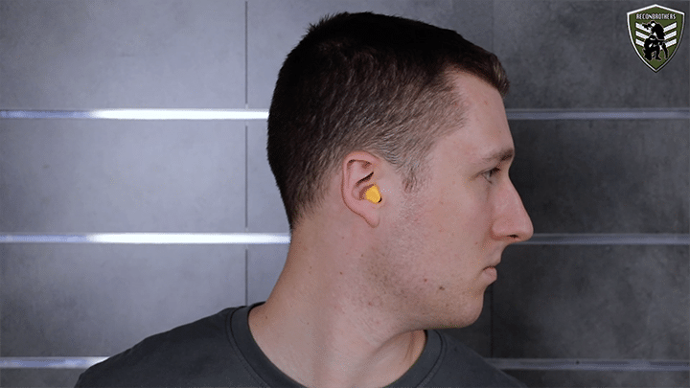
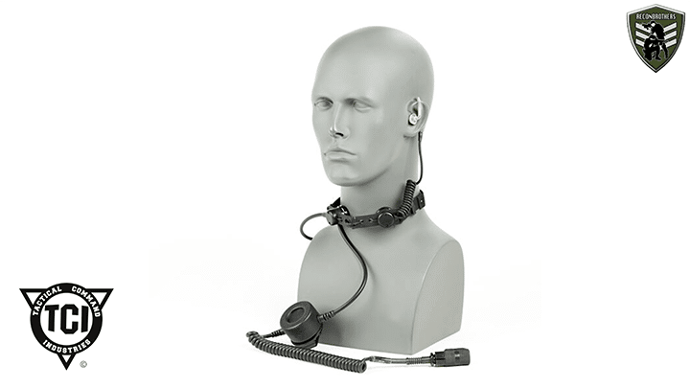

And products like a headset will provide you both protection and communication at the same time.
ACTIVE OR PASSIVE HEARING PROTECTION
Another choice you have to make if you choose for stuff that provides protection, is going for passive or active hearing protection.
- PASSIVE HEARING PROTECTION
To clarify, passive protection are those products that muffle all sounds like ear plugs or ear muffs. These are mostly cheap solutions, but make you lose a big part of your situational awareness.
- ACTIVE HEARING PROTECTION
Active hearing protection on the other hand only selectively muffles the harmful sounds. Examples of this are the electronic ear plugs and headsets.
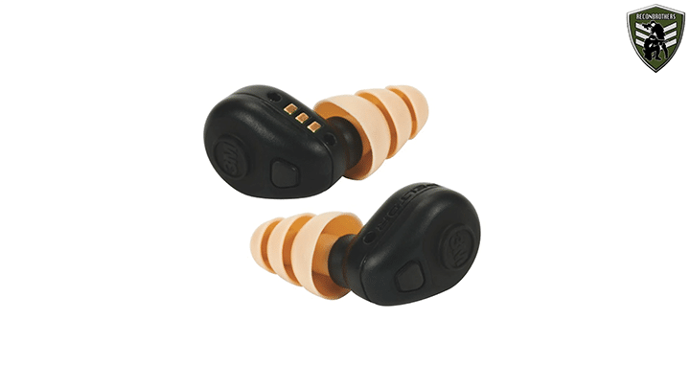

The advantage of these is that you maintain your situational awareness and it’s even possible to enhance your hearing with them. But these kind of products can become pretty expensive depending on what setup you go for. But you know, as they say: “If you buy good, you only have to buy once”.
To give you a more clear idea on what active hearing protection does, we’ll show you some hands-on examples by using a recorded audio that will be played on a constant volume level and some shots of an airsoft gas blowback rifle. The footage can be found in the YouTube video at 02:50.
YOUR RADIO
If you require something that allows you to communicate over distances you will always have to start from the radio system that you will be using. Since this is important for the connection between your radio and the comms setup.
For civilians that will be your typical two-way radios which can already become quite technical on their own and usually have to comply to laws regarding what frequencies and power output you are allowed to use.

We explained all this once before in a video regarding choosing two-way radio systems which you can find on our YouTube channel.

THE PUSH-TO-TALK
If you choose to go for a setup with a radio, you will need a way to connect your radio with your comm set and for this you will require a push-to-talk aka a PTT. These things are basically an extended version of the button on your radio, so you can put your radio away somewhere and easily access your PTT to transmit a message.
AMPLIFIED PTT
Now furthermore, you might have already heard of so called “amplified PTTs”. What does this mean and what are they for?
Well, amplified PTTs are necessary to make boom microphones loud enough. In principal radios these days are equipped to detect such a microphone and amplify this themselves. But you cannot rely on this being the case for every radio and that’s why amplified PTTs still exist today.
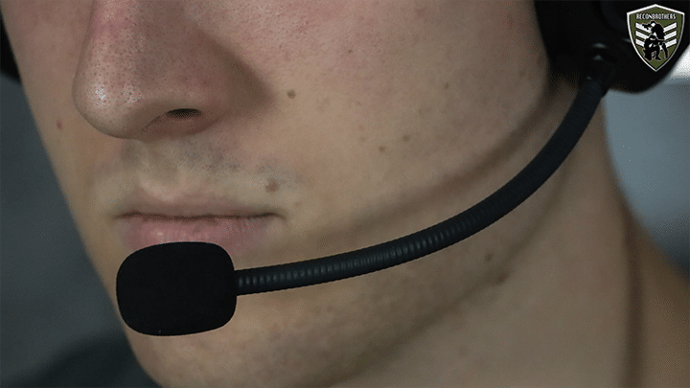
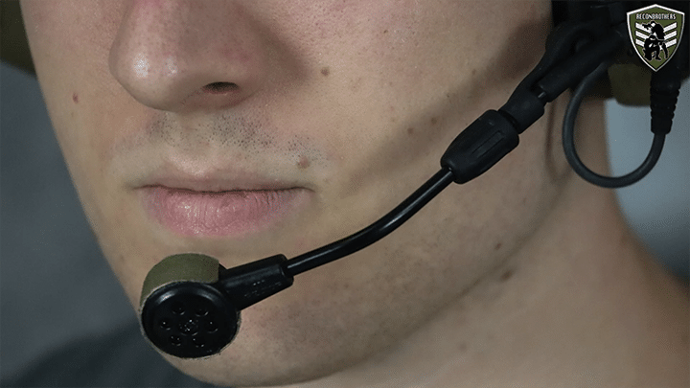
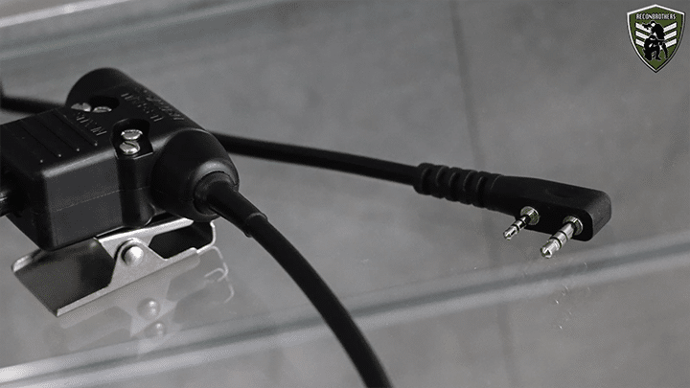
PIN TYPES
Another thing are the different pin types PTTs can come with. These are especially an important thing to point out, since they are the connection between your radio and the rest of your comms setup. And that’s why we recommend to start from your radio in the first place. If you’re not certain whether the pin will fit, make sure to take contact with the supplier just to be sure.
PTT DESIGN
At last regarding PTTs, there are many different designs with all their own practical uses. Some are a bit more convenient than others, it’s also a matter of personal preferences, but in the end you just want something that’s reliable. Of course if you pick a PTT that’s from the same brand as your comm setup, it will have the guarantee of working with it and if you choose a well-known reliable brand it will certainly work properly.
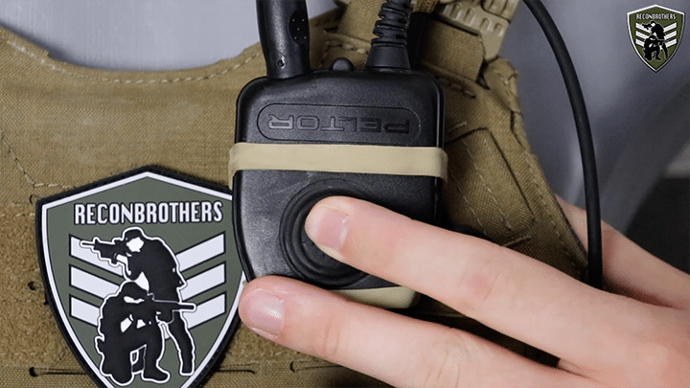
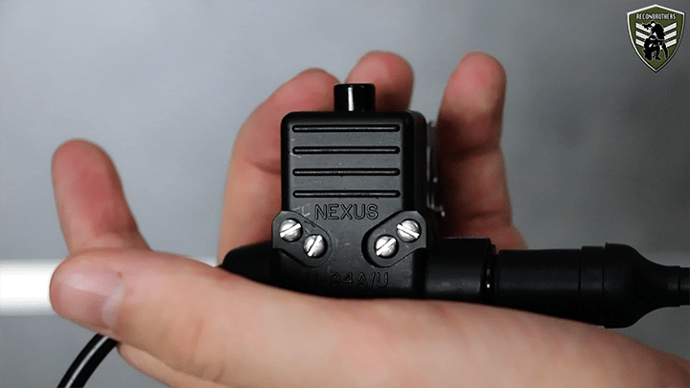
SINGLE/DUAL COMM SETUP
In some cases you might need to use two radios to communicate (e.g. with your team and a commander). In that case we’re talking about a dual comm setup.
These of course require you to connect to both radios and that can either be done using a dual comm set that connects to two different PTTs and these on their own connect to one radio each. Or you can go for a regular single comm set and connect it to a dual PTT that connects to the two radios on its own
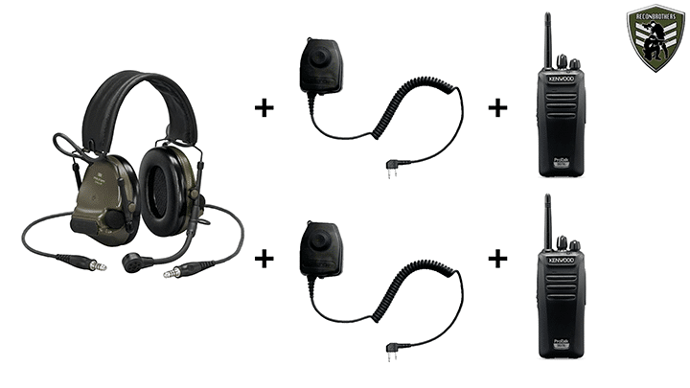
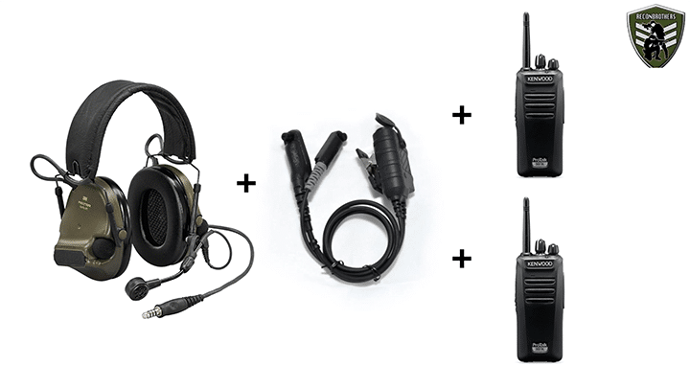
COMFORT
Another thing you have to take into mind is comfort. Meaning what will you be wearing above the ear pro or comms. Think about a helmet, glasses, goggles, a mask or a mandible. Plus for how long will you be wearing these things.
POSSIBLE DISCOMFORTS
When it comes to the ear pro or comms itself, they too come with some discomforts.
Take for example, ear plugs that will become itchy and uncomfortable after a while of use. Ear cups on the other hand can usually be worn for longer periods of time, but the pressure they use for a proper seal can become uncomfortable around the ears and on top of your head with long term uses.
Also the leather headband can usually be replaced with a thicker more comfortable one, but these cannot be worn underneath a helmet.
The heat can also add up around the ears with these as well. But you usually can get gel pads to replace the standard foam ones which offer some cooling around the ears and are a bit more comfortable.
3. THE PURPOSE OF THIS BLOG
So once you have figured out which of these aspects, you need for whatever you intend to do, you will need to decide which ear pro or comms setup fits you best. And since this fitment as said, has to do with the rest of your head or facial protection, we will try to make that decision easier for you.
For that we will objectively make remarks about the overall different options you have available on the market these days. For this we will point out some stuff regarding the product its profile, its protection, its communication options and overall usage.
As for the first one, we’ll start with the most simple ones which fall under the category of passive hearing protection.
PROTECTION SYSTEMS:

a. EAR PLUGS
For that we’ll start with ear plugs. These are of course meant to simply protect you from hazardous noises and are very low in profile.
They obviously don’t allow to be connected with any kind of comm options and by using them you will lose a part of your situational awareness.
EAR PLUGS CONCLUSION
So if you’re in need for hazardous noise protection without the need of comms and situational awareness these are a cheap way to get it.
NOTE!
A last thing we want to point out with these is to make sure you insert them correctly into your ears. We’ve seen way too many people not getting them in correctly and then they won’t do their job properly. So have a quick look at the YT video at 09:13.

b. EAR MUFFS
Next on the list is another one in the passive hearing protection family namely, ear muffs.
These basically do the same thing as the ear plugs, only on the outside of your ears. This makes them pretty big in profile depending on what protection level you require. So, they do protect, but also don’t offer a direct link to comm options. And also with these you will lose a part of your situational awareness.
They are easier to use correctly, come pretty cheap and can usually be worn in conjunction with a helmet and other facial accessories.
EAR MUFFS CONCLUSION
So also these are meant to protect your ears from hazardous noises without the requirement of situational awareness and comms.
Let’s now have a look at the options you get when it comes to communication solely.
COMMUNICATION SYSTEMS:

a. RADIO SOLELY
The first one might sound too simple, but just a radio on its own can already do the job. This is also the most cheap option you can go for communication wise. On their own they can be big in profile and transmitting is done through the external microphone while receiving happens through its speaker.
This of course doesn’t make them stealthy, if that’s a requirement, but you do maintain your situational awareness with them. Also a good thing about them is that other people can hear the transmissions with you so they are immediately informed as well.
But if a buddy is close to you and also uses a setup with an external output, you might get to deal with sound interference.

At last a very practical way to use one is to carry it on the shoulder or chest for easy access and good hearing capabilities. But if worn on the shoulder it can be that it blocks the movement of your head on one side.
RADIO SOLELY CONCLUSION
So a radio on its own is great if you need to be able to communicate over distances and keep your situational awareness but don’t need any hearing protection. But of course you can also use it in conjunction with passive or active hearing protection.

b. EXTERNAL SPEAKER
These are more or less an extension of your radio speaker and microphone, they are only a bit smaller and more convenient in use. They are pretty low in profile and not stealthy, but also here you do maintain your situational awareness. And just as the radio on its own, they allow other people to listen to the messages with you.
But also here you do need to mind the possible interference problem that may occur. So, keep some distance from each other when you’re in a group using the same frequency.
EXTERNAL SPEAKER CONCLUSION
So in overall an external speaker is great if you need to be able to communicate over distances and keep your situational awareness but don’t need any hearing protection. Also these can be used in conjunction with both passive and active hearing protection, just as the radios.
SYSTEMS THAT REQUIRE A PTT:
From here on we’re going into setups that require PTTs and depending on what brand you get, you will have to lay down a good amount of money for a whole set, given you’re going for something decent of course.

a. PATROL HEADSET
These things are a bit special because on its own it doesn’t provide any hearing protection. But you can use them in conjunction with electronic hearing protection by wearing them over the patrol headset.
These are pretty big in profile and transmitting is done through a boom microphone while receiving messages happens through the ear cup. They are stealthy in use and let you maintain your situational awareness since they allow for ambient sound and air to enter.
This also takes care of the heating problem you normally face with ear cups. If you use them with electronic hearing protection, you can even enhance your situational awareness, but you’ll still get to deal with the heat up issue. They also allow to be worn with a helmet and other facial PPEs.
PATROL HEADSET CONCLUSION
So a patrol headset is great to communicate while maintaining situational awareness and if needed gives you the option to use electronic hearing protection as well.
COMM SYSTEMS WITHOUT BOOM MIC:
As for the next ones, we’ll talk about two options that are designed to be used with special facial PPEs like gas masks. Why is this necessary? Well, with a mask you don’t have the ability to use a boom microphone so this requires a different approach to pick up sounds when you’re talking.

a. THROAT MICROPHONE
For this, the first solution is a throat microphone which picks up the vibrations made in your throat to send out your transmission and messages are received through an earpiece.
These things are pretty low in profile and can be used in a stealthy way. Using them allows you to maintain your situational awareness. And these can obviously be used with lots of various facial or head PPEs since their placement is mainly around the neck.
THROAT MICROPHONE CONCLUSION
So a throat microphone is a good alternative if you need comms and a special PPE that makes regular boom mics impractical to use. And also when you require situational awareness without the need of hearing protection, but do know you can use ear cups in conjunction with them.
b. .BONE CONDUCTION MICROPHONE
The second one of the two is a bone conduction microphone and as the name says, these pick up the vibrations in your jaw bone to send out your transmissions. Here messages are also received through an earpiece.
These too are pretty low profile and offer no hearing protection on their own. They allow to be used in a stealthy way and you do maintain situational awareness with them. Since these are so low in profile they can easily be used with other facial PPEs.
BONE CONDUCTION MICROPHONE CONCLUSION
So a bone conduction microphone is another alternative for if you need comms and a special PPE with situational awareness and without the need of protection.
COMMUNICATION & PROTECTION SYSTEMS:
Now, having talked about solely the protection options and solely the communication options, we’ll now have a look at the most advanced systems you can get. Here we’re talking about the active hearing protection systems that offer hearing protection and optionally allow for communication options. And yes, that means laying down quite an amount of money on the table if you aim for something reliable.

a. ELECTRONIC EAR PLUGS
The first option you have here are the electronic ear plugs. These are just as the passive ones, very low in profile but do maintain or enhance your situational awareness. They can optionally transmit through a Bluetooth wireless system or through an induction neck loop and obviously allow you to receive messages through the ear plugs.
ELECTRONIC EAR PLUGS CONCLUSION
So these come in handy if you require hazardous noise protection with the need of situational awareness, even enhanced, and give you the option to communicate over distances as well.

b. HEADSET
The last option you have and by most the superior option as well, is a headset. A headset is basically an advanced version of the ear muffs we talked about earlier. They are pretty big in profile, but provide hazardous noise protection while maintaining situational awareness. This can also be enhanced if needed.
These too can come in options to communicate over distances and the transmission here is done through a boom microphone, while the receiving of messages happens in the ear cups. A headset usually allows for the option to come with a neckband or a headband and can be worn underneath a helmet. And with the use of adapters they can also be worn onto a helmet as well.
HEADSET CONCLUSION
So, if you require something that protects your hearing while maintaining or enhancing your situational awareness and need the option to communicate over distances, this is another option to go for.
OTHER SYSTEMS:
Now, this was the last one of the most common options on the market regarding ear pro and comm setups. There are some other less common options that are more meant for undercover usage or other specialties that we didn’t cover in this blog.
But you’ll get a good idea of what to go for with everything we shared here. Do keep in mind that these kind of products are in constant development and new added technologies are being released quite often.
FINAL TIP!
Also a valuable tip we would like to share when looking for this sort of technological equipment, is to make sure at least every part of your setup has a decent IP certification against water. So, they can withstand for example rain and the moisture in your breath.
THANKS FOR READIN!
Hopefully this blog was helpful for you. If you’re looking for these sort of products, accessories and much more cool stuff make sure to visit our webshop.
